House Finches are small birds in the Fringillidae, or “true finch,” family. Their closest relatives are the Cassin’s Finch and the Purple Finch.
All three species share the taxonomic genus Haemorhous, and the little birds are collectively referred to as American Rosefinches. These little birds live throughout a large portion of North America. Read on to learn about the House Finch.
Description of the House Finch
These finches are quite small birds. They measure just over five inches long, and most individuals weigh less than an ounce. Their body shape is similar to other finches, and they have short, thick bills.
Both sexes have light brown plumage, or feathers, with white and dark brown mottling. However, males have red or rose-colored accents on their heads, necks, and chests.
Interesting Facts About the House Finch
House Finches are widespread and common little songbirds. Read on to learn more about the different behaviors, traits, and adaptations that make them unique.
- The Catch of Color – Just like the flamingo, roseate spoonbill, and blue footed booby, this bird’s color comes from the food that it eats. When males eat fruits and berries, the pigments in the fruit become concentrated. The more fruits and berries the male eats, the brighter his color.
- The Brightest Male – Like many brightly-colored birds, the females choose their mates based on the color of their plumage. Researchers believe that brightly-colored males can collect nutritious food more effectively, a trait that they pass on to their offspring.
- Food Choice – This species also differs slightly in the way they feed their offspring. Most “omnivorous” songbirds only eat insects and invertebrates during the breeding season. They also only feed their chicks a diet of insects. House Finches are one of the few songbirds that feed their chicks an herbivorous diet, though goldfinches also feed their chicks a seed-based diet.
- Successful Spread – These little birds didn’t always live across much of North America. Their original range was much smaller than their range today. In the early 1900’s the these birds lived primarily in the western United States and into Mexico. Humans introduced this species to the eastern coast of the United States as well as Hawaii.
Habitat of the House Finch
This little bird is highly adaptable and often lives in areas that other birds avoid. They inhabit grasslands, open forests, deserts, and the edges of rivers and ponds, but they also live in more urban areas.
In fact, the vast majority of these finches in eastern North America survive by living in close proximity to humans. Their primary habitats are backyards, suburban areas, cities, farms, and parks. In their natural range, the species inhabits more “traditional” and less urban habitats.
Distribution of the House Finch
Through human interaction, House Finches now live throughout much of North America. Their range extends from the southernmost reaches of Canada throughout the United States and most of Mexico. They also live on many of the larger islands in Hawaii.
Originally, this species lived primarily in California, Oregon, Idaho, New Mexico, Mexico, and several surrounding states. Throughout most of their range, these birds are residents year-round.
Diet of the House Finch
This species is almost exclusively herbivorous, which means that they only eat plants. On rare occasions, a House Finch will munch down an insect larva or small invertebrate, but this only happens every once in a while. Most of the time, these little birds eat seeds, berries, fruits, and budding flowers.
Some of their favorite types of seeds are poison oak, mustard, cactus, thistle, sunflower, millet, and more. They also eat pears, cherries, strawberries, peaches, figs, apricots, blackberries, and other fruits.
House Finch and Human Interaction
Humans and House Finches interact quite frequently, especially in the eastern portions of their range. People set birdfeeders in their backyard, and these birds utilize feeders as a source of food. However, farmers dislike these birds because they damage crops, particularly fruits.
Despite this, these little birds have strong populations and live across a wide range of North America. The IUCN lists this particular finch as Least Concern, and researchers estimate their populations at over 20 million!
Domestication
Humans have not domesticated House Finches in any way.
Does the House Finch Make a Good Pet
Humans tried to test this in the 1980’s and it ended up spreading this species across the eastern United States! No, House Finches do not make good pets. In fact, in most places it is illegal to own one as a pet.
House Finch Care
People don’t generally keep House Finches in zoos simply because they are such common birds. However, their care is similar to other finch species.
They live in large enclosures with lots of space to fly, and aviaries in particular work well for their care. Their enclosures have plenty of perches for them to land on, and a variety of low shrubs to forage and hide in. Like most finches, they thrive on a seed-based diet with plenty of supplemental fruits and berries.
Behavior of the House Finch
This species is quite social, and lives in flocks of varying size. Outside of the breeding season flocks of these finches can easily reach into the hundreds or more. Flocks roost together, and break off into smaller groups to forage for food.
They spend their days hopping along the ground or though the shrubbery in search of seeds, berries, and fruits. As the breeding season begins, pairs form and break away from the flock to reproduce. Males woo the females by bringing them food.
Reproduction of the House Finch
Pairs of finches are monogamous during the breeding season, and typically only reproduce with one partner. A single pair can raise several clutches of chicks during the breeding season. Females build the nest and incubate the eggs. Each clutch contains about four eggs, and the incubation period lasts around two weeks.
After hatching, it takes just two weeks for the young to begin learning to fly, and they are independent soon after. Once the chicks are out of the nest, the female starts a new clutch while the male occasionally feeds the previous clutch until they are fully independent.


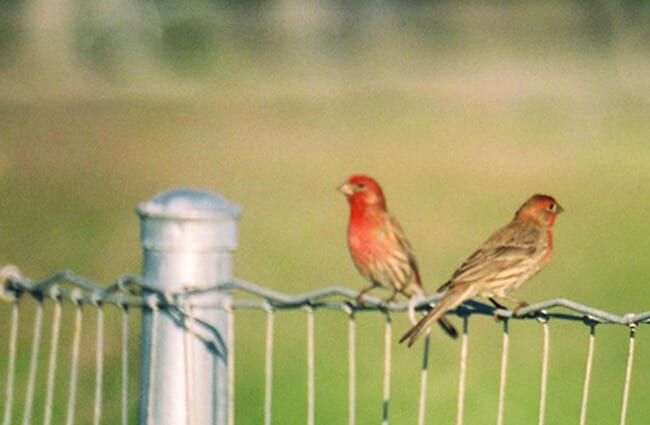
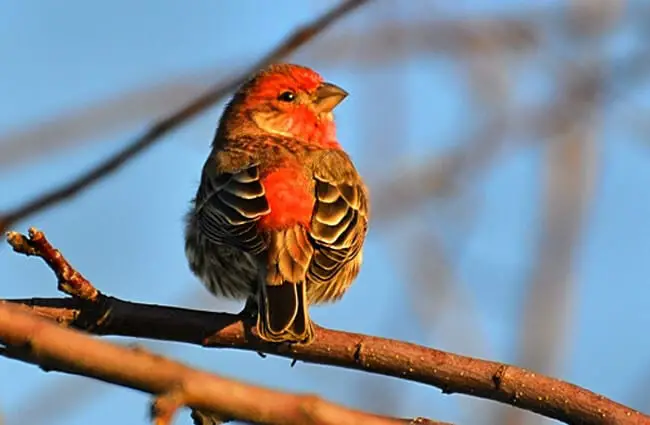
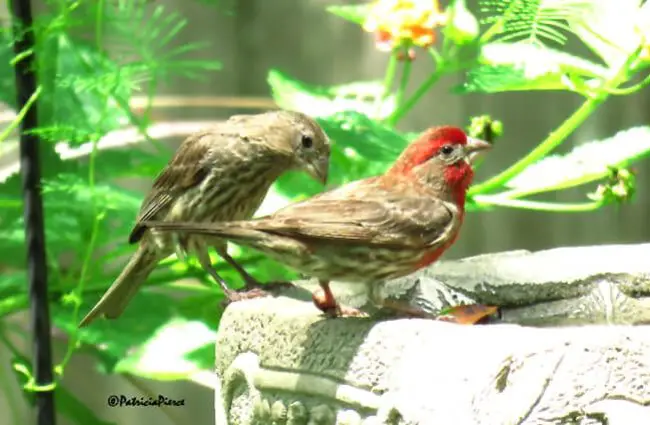

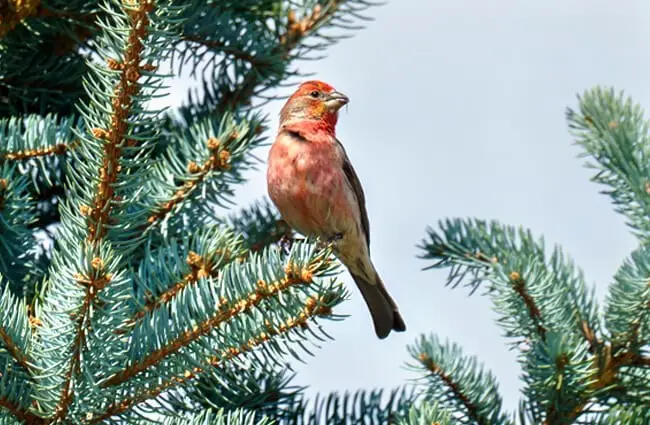
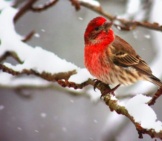
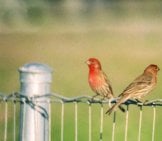
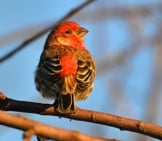
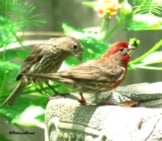
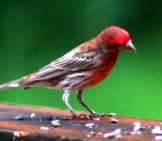
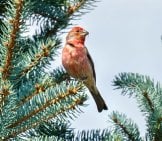
![Red Angus Closeup of a beautiful Red Angus cowPhoto by: U.S. Department of Agriculture [pubic domain]https://creativecommons.org/licenses/by/2.0/](https://animals.net/wp-content/uploads/2020/03/Red-Angus-4-238x178.jpg)


![Red Angus Closeup of a beautiful Red Angus cowPhoto by: U.S. Department of Agriculture [pubic domain]https://creativecommons.org/licenses/by/2.0/](https://animals.net/wp-content/uploads/2020/03/Red-Angus-4-100x75.jpg)

